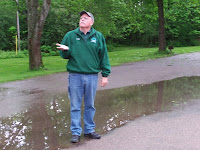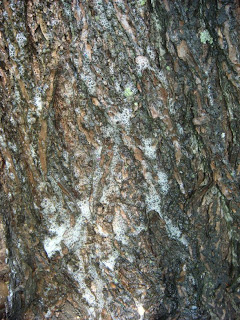Rain Gear: There is No Such Thing as Bad Weather, Just Inappropriate Clothing

Rain gear. What’s right for you?
Well, you’ve finally made it. You took the week off, collected all of your camping gear, and found the perfect tent site (or maybe a lean-to if your plans include one of Vermont’s spectacular State Parks.) The fire is crackling softly and then you hear the disconcerting roll of thunder in the distance. What to do? What to wear?
Rubberized rain gear has been around for a very long time. Soldiers in the American Civil War were issued rubber ponchos to wear in the inclement weather. It kept the water off of them (as it does now) but the design and construction was uncomfortable and not very functional under battle conditions.
The modern camper has a large variety of rain gear to choose from in the 21st century. There are rain suits made from thin plastic, treated rubber and nylon, Gore-Tex coats and pants, and just about everything in between. Heck, I have personally used a garbage bag with hole in it once or twice in my lifetime because I forgot to pack a rain jacket.
To help make an informed decision of which material to use or where to go shopping you need to take into account the details of your trip, the expected conditions, availability of products, and cost. Rain gear can run from pennies a bag to several hundred dollars, all dependant on just a few of the details above.
Rubber v. Gore-Tex.
We all learned in school that rubber repels water. Case-in-point: The tires of your car are in constant contact with water yet we depend on the construction to guide our vehicles safely down the road. Since the plastic boom of the fifties, sixties, and seventies, they have loads of plastic/rubber treated products sold as rain gear. The theory is that the density of plastic or rubber is greater than that of water, thereby creating a barrier. It works. It works very well. However the density also prohibits the moisture emanating from your body to escape. The sweat and perspiration gets trapped inside while the garment is repelling water outside. The inability of naturally occurring water vapor to evaporate after leaving your skin also creates a heat barrier than can speed dehydration. (Funny thing thinking about hydration during a rain storm, isn't it?)
Given all of these details one may ask “why buy this stuff?” Well, there are several reasons as to why you might. First and foremost is cost. You can get a reasonably comfortable rain suit for around $25.00. You can get an emergency poncho for a buck at just about any camping store. Cost may be your factor and if you are not planning on wearing the outfit or poncho for extended periods of time or doing strenuous exercise, it may just be a perfect match.
A plastic or rubberized poncho or jacket would work very well for the afternoon rain shower around the campground when you do not have a whole lot on your “to do list.” If you are not engaged in activities that may produce amounts of sweat and you can take the coat off in a reasonable amount of time, then why not?
Gore-Tex is an amazing treatment to cloth apparel. Gore-Tex is not the material itself so it can be applied to just about anything. You can see advertisements for Gore-Tex jackets, hats, pants, gloves… the list goes on. What Gore-Tex does is embed a barrier tightly compacted enough so rain water does not enter, yet loose enough for water vapor to escape. There is a much more technical explanation but that’s the short and simple story.
The military used Gore-Tex in some of their uniforms to keep our service men and women dry in the field. I had one of these jackets and loved it. Functional and durable in a summer rain or a winter snow, now if only I could remember what I did with it I’d be a happy guy.
The down side to Gore-Tex is that after a while, sometimes a very long while, the treatment breaks down and it loses its effectiveness. Also, you won’t leave the store for under about $150.00 for a basic covering.
On the positive side, since the material is allowed to breathe you run less of a chance of overheating or dehydration. Rain gear made with Gore-Tex is great for hiking and other physical activities in the wet and wild.
So before you pick the jacket or suit for you, look at the pros and cons. Are you going to be active? What is the time required that you may be wearing the gear? How much are you willing to spend? When you look at these issues honestly the choice gets easier to make.
As for me, I wish I could find that jacket but if I don’t and it’s a hot summer rainstorm, I just may go without all together!
Jim Fuller is the Park Ranger at Grand Isle State Park

.jpg)
.jpg)
Just back from Jamaica SP earlier this week. Yep. It rained. Went with and without rain gear. A nearly perfect weekend! Thank you Vermont State Parks! we'll be back soon.
ReplyDeleteNo arguments here about the value of true Gore-tex garments! I owned a coat made with another coating with similar claims, but it always left me feeling clammy. Not so with Gore-tex! To get a better price, check out close-outs online or go to end-of-season sales. I got mine for under $100.
ReplyDelete